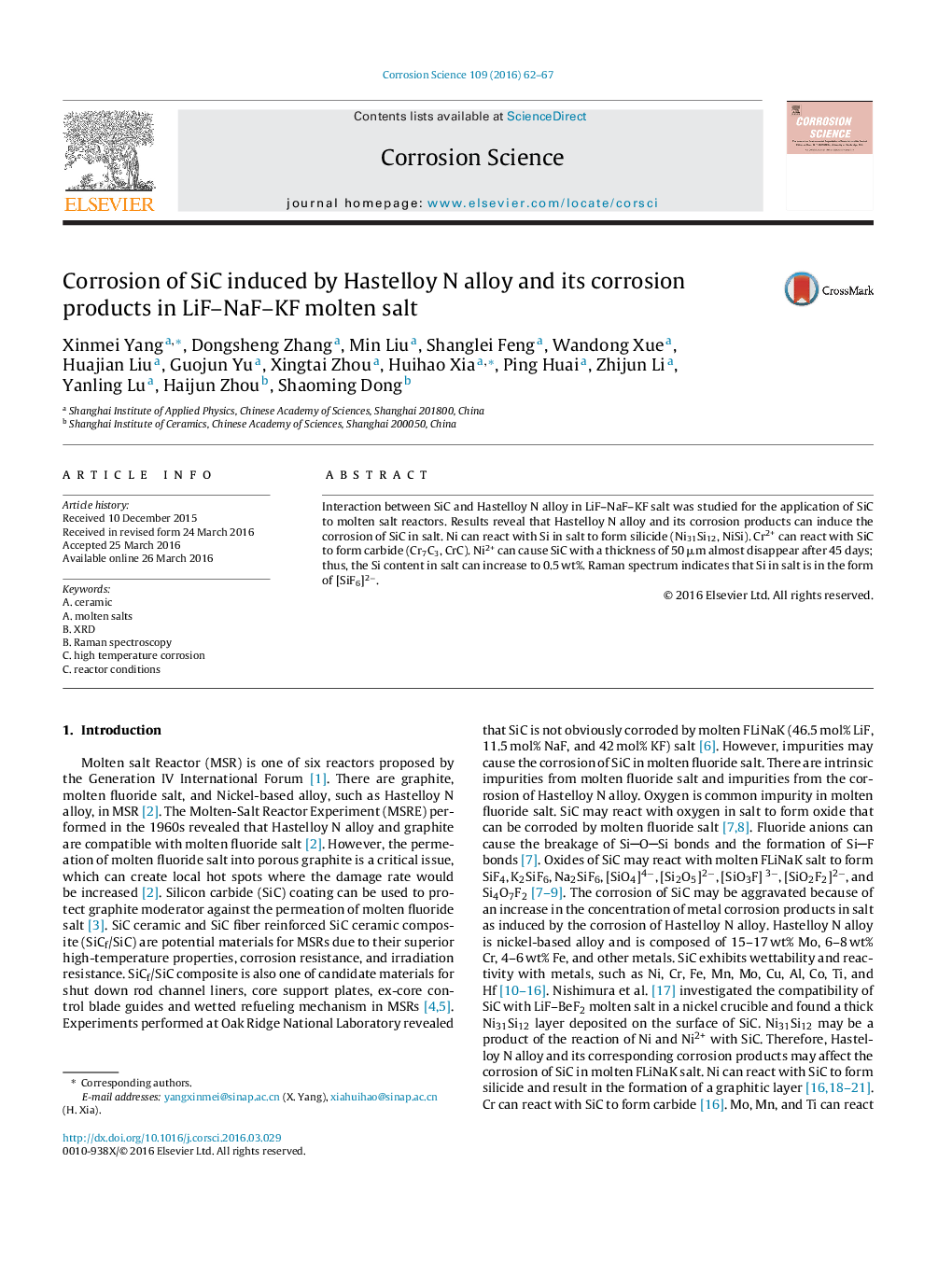| Article ID | Journal | Published Year | Pages | File Type |
|---|---|---|---|---|
| 1468394 | Corrosion Science | 2016 | 6 Pages |
•Effect of Hastelloy N alloy and corresponding corrosion products on the corrosion of SiC was studied.•Ni in alloy can react with Si in salt to drive the corrosion of SiC by the formation of Silicide (Ni31Si12, NiSi,) on alloy.•Corrosion product NiF2 can increase the corrosion of SiC. Raman spectrum indicates that Si in salt is in the form of [SiF6]2−.•Corrosion product CrF2 can drive the corrosion of SiC by the formation of carbide (Cr7C3, CrC) on SiC.
Interaction between SiC and Hastelloy N alloy in LiF–NaF–KF salt was studied for the application of SiC to molten salt reactors. Results reveal that Hastelloy N alloy and its corrosion products can induce the corrosion of SiC in salt. Ni can react with Si in salt to form silicide (Ni31Si12, NiSi). Cr2+ can react with SiC to form carbide (Cr7C3, CrC). Ni2+ can cause SiC with a thickness of 50 μm almost disappear after 45 days; thus, the Si content in salt can increase to 0.5 wt%. Raman spectrum indicates that Si in salt is in the form of [SiF6]2−.
